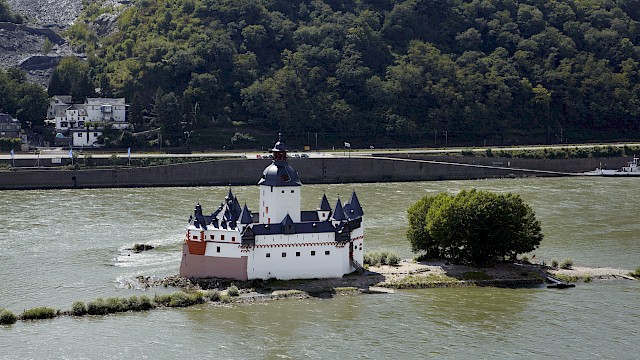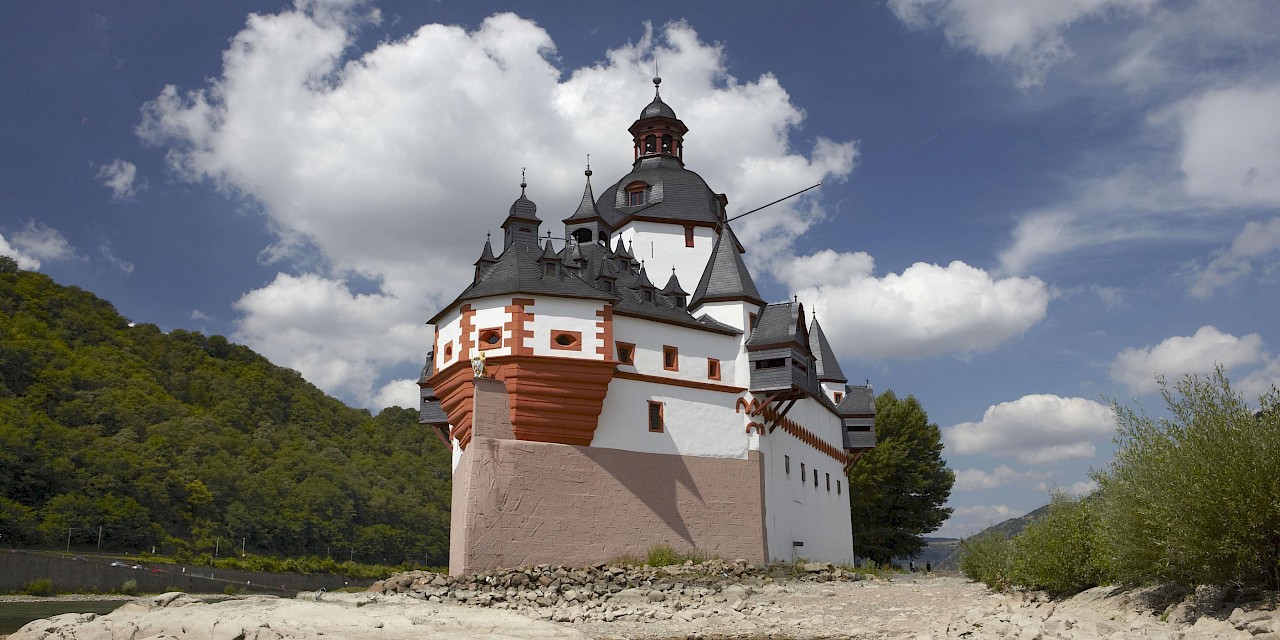Pfalzgrafenstein Castle – The smart tolling station

No ship got past Pfalzgrafenstein Castle in the Middle Ages. At least not for free. Every ship had to pay a toll. And what today looks like a cosy boat trip used to be one of the most difficult crossings on the Rhine.
Ripping River Rhine
Any boat had to navigate through a small bottleneck between Kaub and this rock in the middle of the river. The passage was only 110 meters wide. And Ludvig IV. saw his chance. He built Pfalzgrafenstein Castle in 1327 on the rock of this difficult passage.
Tolling Station Pfalzgrafenstein
Whoever wanted to get past, had to pay for it. A trumpet and later a bell sound warned every ship. It was the sign to moor in Kaub. There the ships had to pay a toll for their goods and their workmen. The ships could continue their journey only with a certificate from the toll collector in Kaub.
Ludvig IV. was neither the first nor the last one to profit from a tolling station on the Rhine. Everyone wanted a piece of the pie. To collect tolls castles were built. These castles belonged to the dioceses of Mainz, Cologne or Trier. Or, like the Marksburg, to noble families. In the Middle Ages tolls were a major source of revenue. And they were a major pillar of power in the Rhine region (read more about tolls in Koblenz).
Pfalzgrafenstein – Toll on the Rhine, a business that pays
Das Video wird durch Klick/Touch aktiviert. Wir weisen darauf hin, dass nach der Aktivierung Daten an den jeweiligen Anbieter übermittelt werden.








 Facebook
Facebook  Instagram
Instagram  Twitter
Twitter